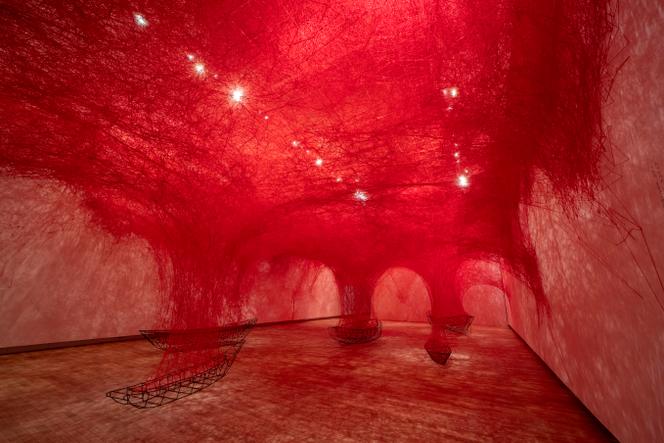


Dynamic plumes of red thread spring from boats on land and fill the space. A dense network of black wires encloses charred chairs and a piano in abstract smoke. Visions of meditative rapture or dread, these two spectacular installations are at the heart of the journey through Chiharu Shiota's work, which spans almost 30 years, which the Grand Palais, Paris, is presenting as a preview to its galleries' reopening.
This semi-retrospective of the Japanese artist, organized by Tokyo's Mori Art Museum − the internationally-touring exhibition devoted to the artist is the largest to date − oscillates between darker and more optimistic phases, in which the "Tremors of the Soul," its title, appear as the common thread of a reflection on connection and emotion.
Chronologically, the exhibition looks back at the artist's formative years in the 1990s with photographic archives, videos and watercolors. As a painting student in Kyoto, she quickly felt frustrated with painting: "I felt blocked. I had the impression that everything I was creating had already been done," she explained. During a study trip to Canberra, Australia, after a dream in which she had become a painting questioning herself from inside a canvas, she realized a pivotal performance: She covered herself in red paint while wrapping herself in a canvas in a visceral, almost horrific vision. This act of bodily expression proved to be a liberation.
You have 69.82% of this article left to read. The rest is for subscribers only.
